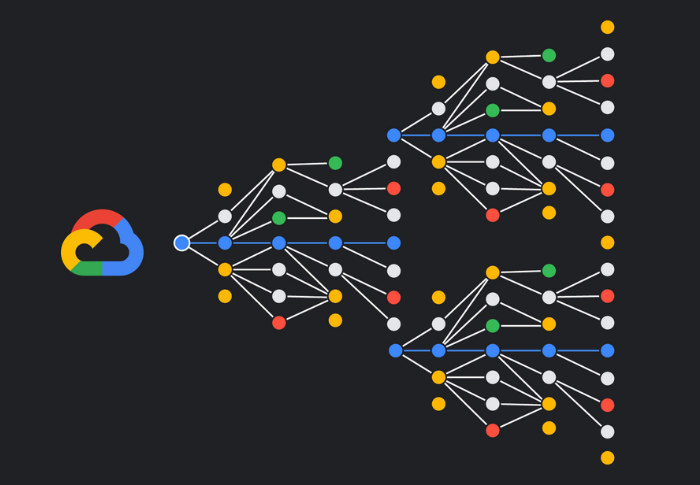
Generative AI applied to Education - The big shift
When the shift towards cloud computing happened in the market years ago, I remember seeing myself in meetings full of people explaining about what this new consumption-based business was all about and how the way of thinking the whole process of innovation and IT would need to change for this to make sense to companies. Right, I mean, moving virtual machines from on-prem to the public just to say “hey, my company runs on the cloud” didn’t (and still doesn’t) add any value to the business itself.
More than that. Even the sales teams of those cloud providers didn’t understand exactly that selling cloud wasn’t about licensing anymore. It was about projects, which would require them to understand the industry, the solutions, the workloads and so on and so forth.
Why am I saying all this? Because we’re on the Edge of a new market shift and its name is Generative AI (a subarea of Artificial Intelligence) this is going to put the market upside down once again and that necessarily means that our mental model will need to shift (again) with it.
We’re living the convergence of computational power (provided by the cloud), maturity of AI (specially GenAI) as a technology reachable to every human being, API economy as a workable business model and industry knowledge. How exciting is this?! Additionally, I discuss this topic on below’s video as well.
Why Generative AI is the shift and not AI as a whole?
Well, you might have heard that already but it is never too much remembering that Artificial Intelligence has been there for a while. We have actually used it on a daily-basis for years already (who here has never translated a sentence in Google Translator, for instance?). However, despite all the efforts of these big companies over the years on trying to ship that technology more broadly, it didn’t seem to be something that the market was aiming for and most importantly, was willing to invest on.
Well, then ChatGPT happened and suddenly people started to realize that now machines could really generate new and very, very accurate responses to problems of all sorts: STEM, history, languages. Scarely good answers and that caught the attention of the market.
When I think about “why” cloud suddenly became a thing in the market in 2008, it is easy to understand the huge benefits promised by it: paying only for what its been used, automation, SLA levels that less the 5% of the organizations globally would dream about, focus on the solution and not in the infra. It is a lot, especially considering the complexity and how expensive hardware and software was at that point. Not to count aspects that would directly impact the business model and competitiveness of companies like faster Time-to-Market (TTM), for instance.
Now, when I reflect about Generative AI and the reason by which people got so fascinated by the delivery of the technology, there is one main aspect that comes to my mind and which, in my humble opinion will drive the shift in the industry: use cases.
While you were reading this you probably thought about a dozen use cases where ChatGPT, Bard and other Generative AI-based tools could help you deliver, right? It’s natural because this is all about humanity in its essence , right? Creativity to generate new stuff. I mean, if your company needs to write an ebook about a new product coming up for instance, you then hire a writer. You’re going to brief them about the content and hopefully see that result a couple of months later. Well, could you see Generative AI doing that work for you? I could. Easily. Quicker and probably at a lower cost with the proper human curation.
That’s the reason. Think about a task or process in your daily life or organization. Things that are not out of ordinary but that necessarily need people to perform. Well, that process or task is what we call “use case” and there is a big chance it can (or will be able to soon) be performed by a good mechanism powered by Generative AI.
So, responding to the initial question that started off the discussion in this section: Why Generative AI is the shift and not AI as whole? The direct answer is: is because it is easier to think and map out a (or a set of) use cases (which are usually very tied to the industry). It is easier to see Generative AI solving those very well defined use cases due its proximity with humans point of view about a given aspect or situation within the organization.
Putting this in a different perspective, it is more like Generative AI is now able to solve challenges that (until now) only humans could, like generating a poem, writing a music, creating a video, summarizing a book, explaining a complex legal contract, and the list goes on. All these? Yes, these are all use cases for Generative AI.
What changes then?
A lot. Let’s reflect a bit about three different perspectives.
Business
The way we’re used to thinking about a digital product and how to make money out of this, is the first impact. Now, rather than thinking about a platform and how much it will cost for a given company to put together a very AI/ML specialized team to deliver a feature or set of features based on AI (like, recommendation, for instance), you’re simply consuming a fine-tuned API, out of counter, and that has direct impact on product’s cost base, which has direct impact in pricing, revenue and profitability. So now, for most cases (not all of them, obviously), think of AI as a commodity to your business, rather than a unique thing that only your organization has and learn how to turn it into a competitive differential.
Again, establishing a parallel with the cloud market, I remember that at the first sight, people were lost. I recall people bringing legit concerns about the business and the impacts it would have. One of the questions I used to get and answer a lot was: “Today I know exactly how much my cost with infrastructure is and so, I can specify precisely how much of my product cost to be produced and calculate accurately, my margins. Now, with this pay-as-you-go model, how am I going to be able to calculate my infra costs if it can change dramatically every month?”
It took time for companies to finally realize that the cloud native model was all about saving money (even though it would generate some lock-in), because aspects like depreciation of equipment, specialized teams, premises resources and so on, was never taken into consideration. Also, seasonality is totally measurable and so foreseeable, which means that pricing composition, for instance, is something that could be affected for sure, but it would come accompanied by money savings.
People and companies’ mindset
Every transformation process requires a mindset shift. Why? Well, because it necessarily means that people will need to be involved with the fact that usually the disrupting technology brings with it a completely new way to interact not only with the technology itself, but mainly on the way its capabilities and strengths are leveraged, allowing companies (and ultimately people), to deeply benefit from it. In the case of Generative AI, the same happens.

At the personal level, rather than fighting the technology and its eventual negative impact (which will eventually happen), people should now start thinking about how to infuse the power of automated content generation in their daily tasks (again, use cases) so that they can, for instance, get some time back? Or, maybe increase levels of their production capacity at work and by doing so, elevating their delivery quality and impact? The Figure 1 below shows a group of teachers back in 1988, rather than embracing the new technology.
At an organizational level, it is important that companies understand that AI is a new big leap in the transformation journey that they might have eventually started. And it is important to understand what being an “AI-first” company means (for instance: that “becoming data centric organization conversation” is no longer just a desire, it has to be performed right away and it implies on making the proper investments). Also, they need to rethink budget allocation for technology. Creating the culture of thinking oriented to use cases. Small changes rather than big ones. A lot has to change here.
Engineering teams
One of the big changes promoted by Generative AI happens also in the field of engineers. I mean, the way traditional AI was made versus how this is going to happen (most likely) with Gen AI. Let’s take a look at Figure 2 before we can discuss more about it.

Despite the fact that we’ve seen a lot of progress on both tooling and strategies for delivering proper AI to final users, it still stands as a very worky process. Especially because the data has a core role in this and therefore has to be deeply and carefully curated for the AI models to be able to properly achieve their goals. Data preparation box on above’s schema highlights only some of the steps companies have to deal with today to properly settle on data. There is a lot of complexity there.
Then, once the data is settled a new process comes in. Training the model. Companies have to go through a very careful process of selecting the best model to address that given situation. Then, train it properly in a very balanced way. Then, evaluate the results and eventually retrain it. Ah, don’t forget about tuning out parameters as we go. It is true that more mature companies have automations in place for all of that, however, it doesn’t change the fact that a lot has to come along well for this to be properly delivered.
Finally, we have to act on exposing those models for consumption. Well, as you can see through the third box on the right (Deployment), another set of considerably complex steps has to take place. Then, at the very end, a given application or API can hit the model’s endpoint to start interacting with it.
Not to talk about the multi-disciplinary and complex set of skills that need to be in place for organizations to properly deliver the above.
The good news is that, Generative AI working model seems to be considerably simpler, which can accelerate the delivery of projects that add value to organization’s customers while compacting up teams and processes leveraging the best of cloud environments automation and scalability. Let’s take a look at Figure 3 to compare how things can be deeply simplified with Generative AI lean approach.

Despite the fact that some work on curating data might still be necessary, Generative AI benefits from a more “smart” way to look up data and learn from it. It will surely reduce the efforts around data.
In the same way, we will continue needing to select a Large Language Model (LLM) model we want to work with to address a given use case, however, that process will be considerably simpler as the training, eval and other intrinsic aspects of working with models are already in place. Also, some parameter tuning continues to be needed, but they tend to be very few and very deterministic ones.
Exposing those models for external consumption also tends to be very simple, especially if you rely on a good cloud provider to deliver that experience. Google Cloud, for instance, allows you to easily and quickly deploy and expose your LLM endpoints through Vertex AI.
Now, the question that arises is why understanding this change is important for engineers? Well, due three main aspects, in my humble opinion.
-
AI to data and not the opposite. The traditional approach is all about bringing data to AI while Generative AI is all about bringing AI to data. That perspective flips over how companies should be thinking about building applications and how they should be working towards building teams and selecting proper skill sets.
-
Democratized AI. From a Line of Business (LOB) perspective, Generative AI brings the concept of “AI driven centered on developers rather than AI centered on data scientists”. Here is a prophecy: This fact will create a whole new generation of generative developers.
-
Unlimited scope. While traditional AI seems to be very focused on controlled scenarios (usually prediction-based), Generative AI brings a much broader scope of work. It brings this idea of multi-dimensional problem solving, which was something intangible for computers (reason by which we necessarily needed humans for almost everything).
What about Education?
The world of education is on the cusp of a transformative era (again), driven by the rapid advancements brought by Generative AI. Why? Well, because Education is a content-based industry, which means that generating and curating all sorts of contents is critical for the industry and that’s exactly the field of Gen AI.
The future of generative AI in education is bright. As the technology continues to develop, we can expect to see even more innovative and transformative applications that will redefine the way we learn and teach. Generative AI has the potential to democratize access to quality education, personalize learning experiences, and enhance student outcomes, making education more effective, engaging, and accessible for all.
Now, as stated earlier, everything in this admirable new World is (or should be) about use cases. That means that landing Generative AI in Education is essentially mapping out critical use cases and then experimenting solutions to address those.
This is going to be the subject of our next article. Stay tuned!



